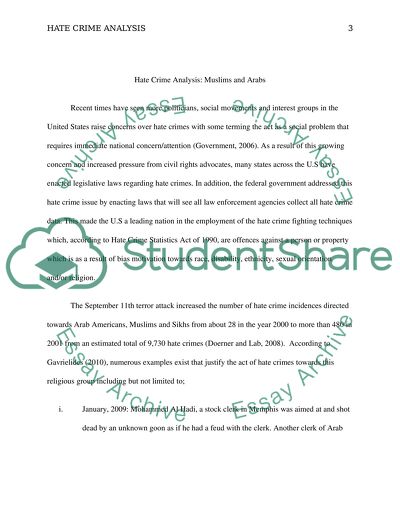Cite this document
(“Hate Crime Analysis: Muslims and Arabs Essay Example | Topics and Well Written Essays - 1250 words”, n.d.)
Hate Crime Analysis: Muslims and Arabs Essay Example | Topics and Well Written Essays - 1250 words. Retrieved from https://studentshare.org/law/1458349-hate-crime-analysis-muslims-and-arabs
Hate Crime Analysis: Muslims and Arabs Essay Example | Topics and Well Written Essays - 1250 words. Retrieved from https://studentshare.org/law/1458349-hate-crime-analysis-muslims-and-arabs
(Hate Crime Analysis: Muslims and Arabs Essay Example | Topics and Well Written Essays - 1250 Words)
Hate Crime Analysis: Muslims and Arabs Essay Example | Topics and Well Written Essays - 1250 Words. https://studentshare.org/law/1458349-hate-crime-analysis-muslims-and-arabs.
Hate Crime Analysis: Muslims and Arabs Essay Example | Topics and Well Written Essays - 1250 Words. https://studentshare.org/law/1458349-hate-crime-analysis-muslims-and-arabs.
“Hate Crime Analysis: Muslims and Arabs Essay Example | Topics and Well Written Essays - 1250 Words”, n.d. https://studentshare.org/law/1458349-hate-crime-analysis-muslims-and-arabs.


